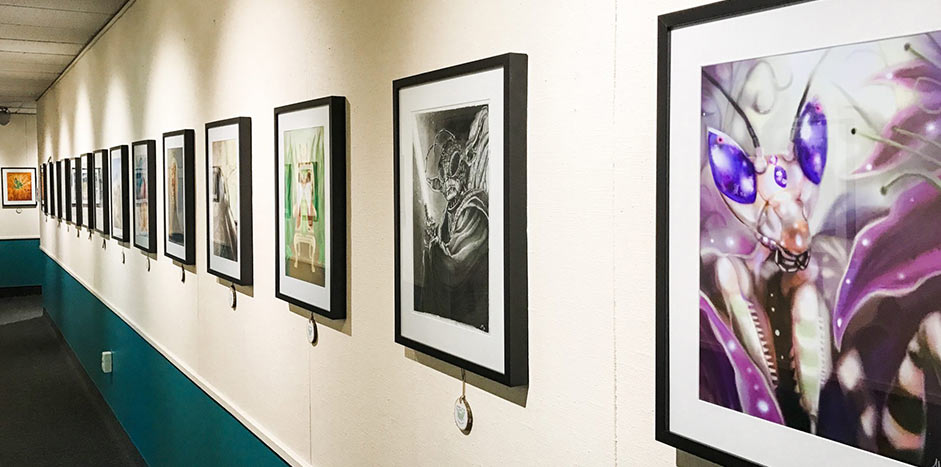 Human anatomy can be difficult enough to understand, so when Elizabethtown College Assistant Professor of Biology Anya Goldina empowers her students to create an art piece highlighting a part of the body, many are hesitant at first.
Human anatomy can be difficult enough to understand, so when Elizabethtown College Assistant Professor of Biology Anya Goldina empowers her students to create an art piece highlighting a part of the body, many are hesitant at first.
“It’s an interactive project to get them thinking visually about exactly what they are studying,” said Goldina.
Since 2015, Goldina’s students in her Biology 201 and 202 (human anatomy and physiology) classes have been offered the project as extra credit. That incentive drives many of the students to pick up a paintbrush or find creative ways to design an organ or system that makes up the human body.
“This physical interaction helped me focus on this concept and truly absorb it in a way not accessible with a textbook,” E-town student Isobelle Hughes shared on the students’ website.
Goldina and her students took it to another level this year by collaborating with students in Assistant Professor of Education Peter Licona’s courses and with students in Professor of Fine Arts Patricia Ricci’s classes. The students’ artwork is being showcased in a summer exhibit at the North Museum of Natural History and Science in Lancaster. The exhibit, known as the STEAM (science, technology, engineering, art, and mathematics) Art Gallery showcases the student artwork “allowing science to inspire art, and art, science.”
The art also will be on display in fall 2019 at the College’s Lyet gallery, which will be installed entirely by E-town students majoring in Art and the exhibit will be open to the public.
Digital Direction
Goldina’s students didn’t stop with their art projects. Through the College’s Summer Scholarship, Creative Arts and Research Projects Program project, they worked to make anatomy accessible to the public.
Elizabethtown College students Rebecca Kruse and Aubrey Mitchell designed and launched a website showcasing the artwork in a visual format for users. Collaborating and learning from their mentor Carol Costa Ouimet ‘97, they used the foundation they’ve gained from their Anatomy and Physiology and Digital Humanities courses to share their passion for science with the public. The website also contains research and resources for educators, peers, and the public. For example, educators can learn about different resources and download lesson plans to utilize in their classes, when teaching topics connected to anatomy and physiology. The students challenged themselves to organize content based on grade levels offering elementary, middle, and high school tailored materials.
Another feature the students included was the ability to view their website in Spanish too. E-town student Rebecca Voler provided her expertise to bring this part of the site to fruition so that the students could offer their resources to a broader audience.
View the students’ website to learn more or explore the students’ art.


